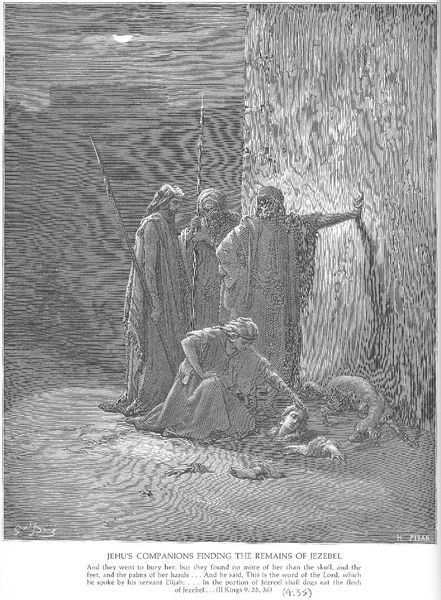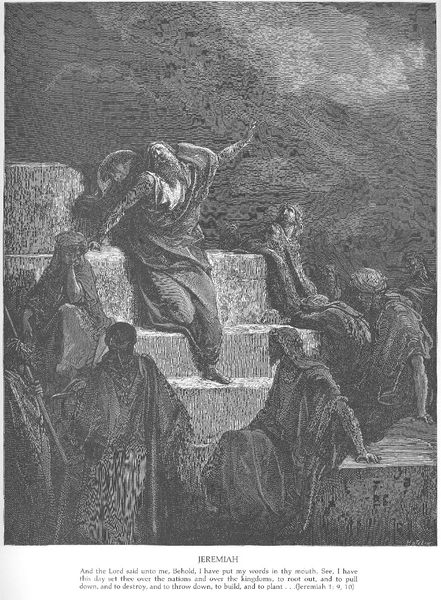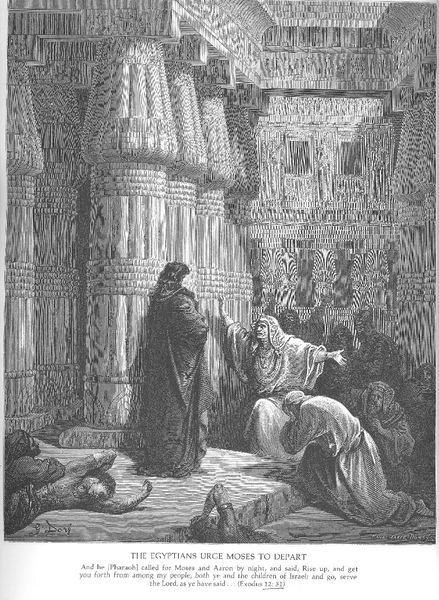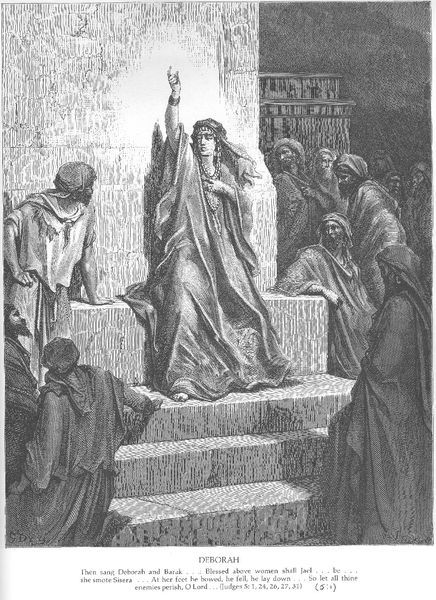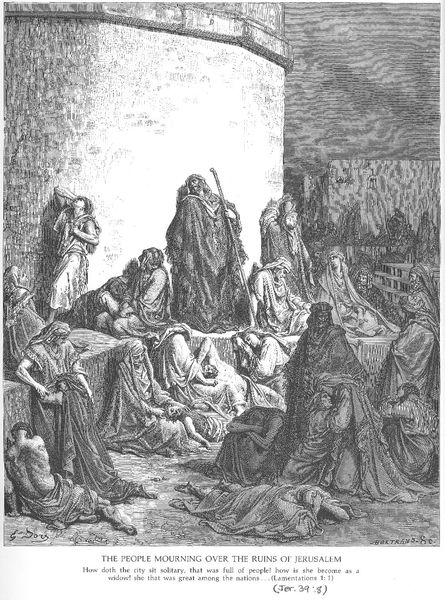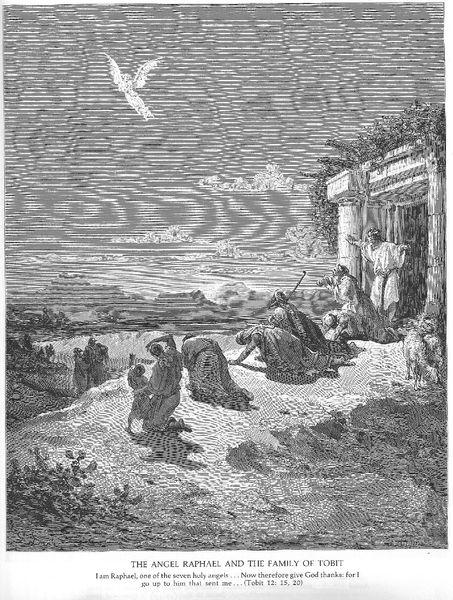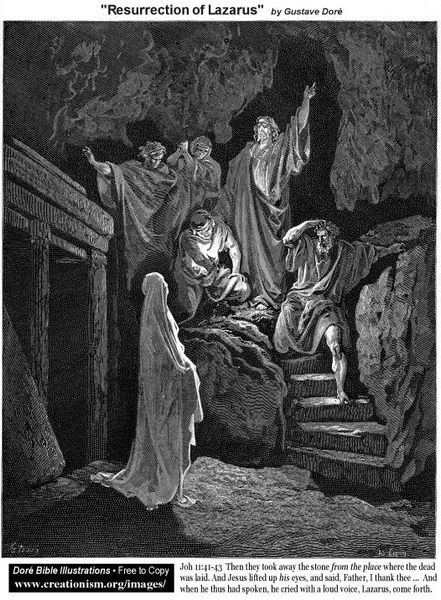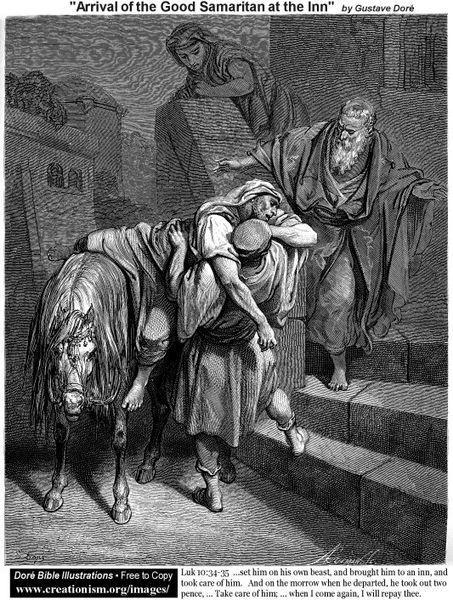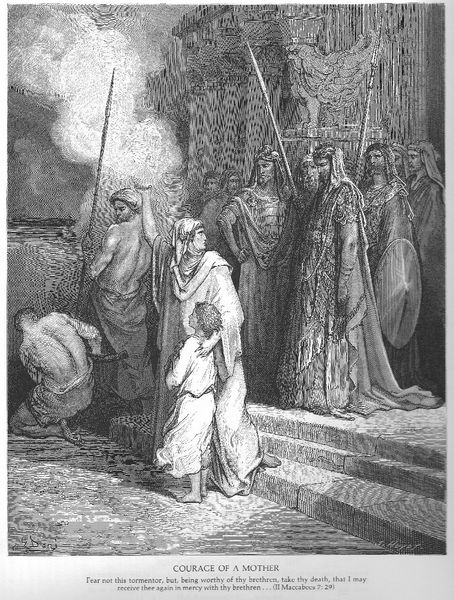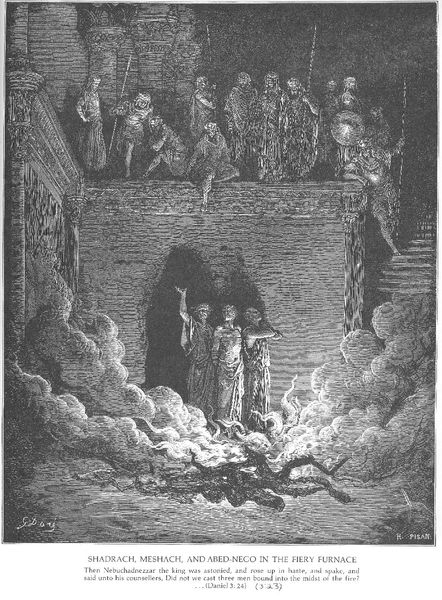
drawing, print, engraving
#
drawing
#
narrative-art
# print
#
figuration
#
male figure
#
romanticism
#
arch
#
carved
#
christianity
#
history-painting
#
engraving
#
angel
Copyright: Public domain
Curator: This engraving, titled "The Firstborn of the Egyptians Are Slain," is the work of Gustave Doré. What strikes you first? Editor: Oh, man, just pure, unadulterated dread. You can almost hear the wailing rising from the stone steps. It’s so stark, so final. Curator: Observe the stark contrasts in the chiaroscuro. Doré manipulates light and shadow to construct a visually dramatic and morally charged composition. The angel of death occupies the pictorial foreground, doesn't it? Editor: Yeah, it’s kind of impossible to miss a massive, winged figure, even if the details on those wings look more feathered and flowy than feathery. What’s he even holding, a scepter of doom? And then there are the dead or dying figures sort of collapsing inward—is this romanticism at its most melodramatic? Curator: Romanticism, as a movement, did emphasize intense emotion, but here, Doré transcends mere emotional display through symbolic ordering. Note how the rigid architecture in the background underscores the implacable nature of divine judgment, no? Editor: Right, judgment’s rigid. These huge, looming structures are so incredibly heavy. They almost mirror the weight of despair etched onto the figures’ faces and the way they’re physically slumped, almost defeated, down into the scene. You feel pinned between inevitability and human anguish. It makes your breath catch a bit in your chest. Curator: Consider, too, Doré’s commitment to narrative art, exemplified by this powerful depiction of a pivotal moment in religious history. Each line and shading decision reinforce the narrative of divine wrath and human suffering. Editor: Totally, I think seeing it as an engraving also does something important to it, giving it a sort of etched-in-stone permanence. In the grand narrative, there’s an almost unnerving feeling seeing personal tragedies made grand, universal, biblical even. Curator: Indeed, by concentrating on visual codes like light, form, and the emotional deployment of line, Doré conveys complex ideas about mortality and fate. Editor: It does ask, though, what is it to be witness to, and what does any single loss mean amid something immense. I think the answer’s hidden in plain sight right in the texture of it. In all the cross hatching that Doré employs, a kind of unbearable tension, woven together in dark strokes on white, just like tragedy and history can't ever come apart.
Comments
No comments
Be the first to comment and join the conversation on the ultimate creative platform.
